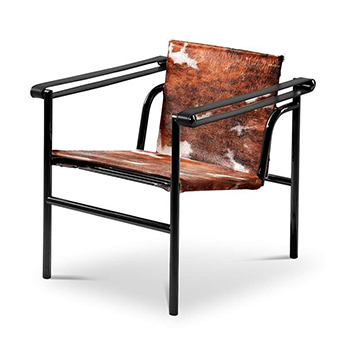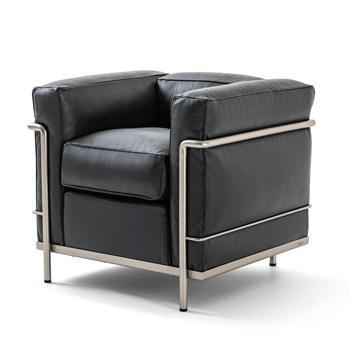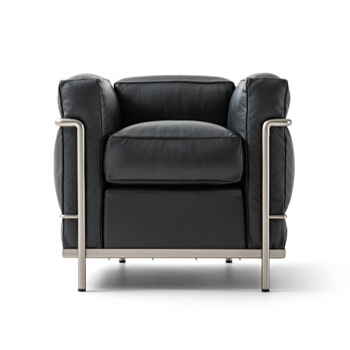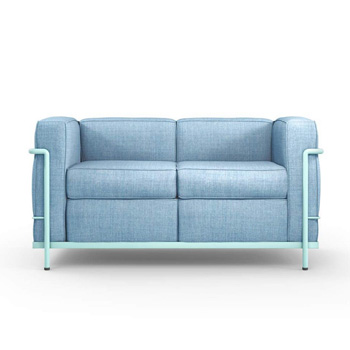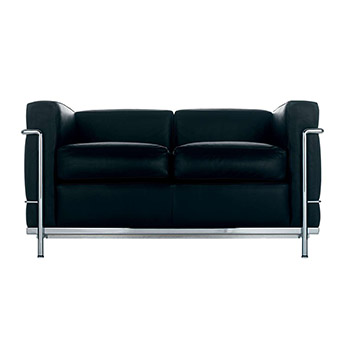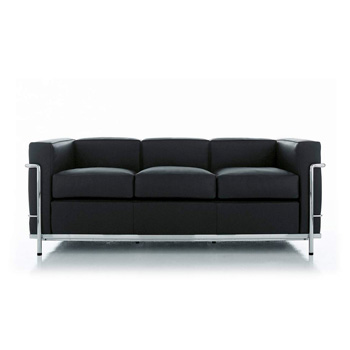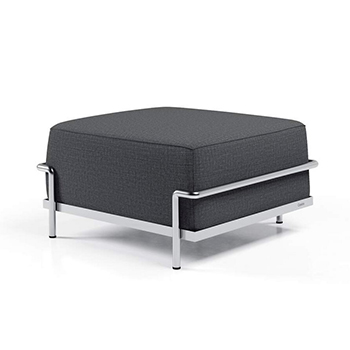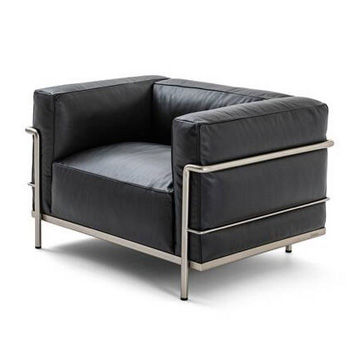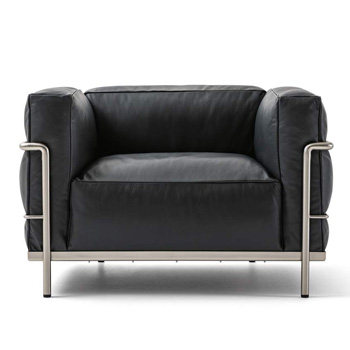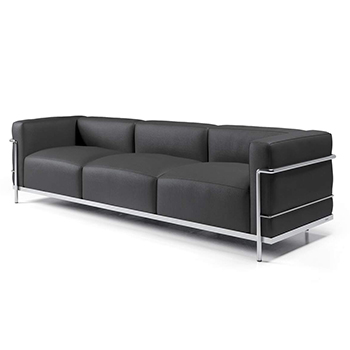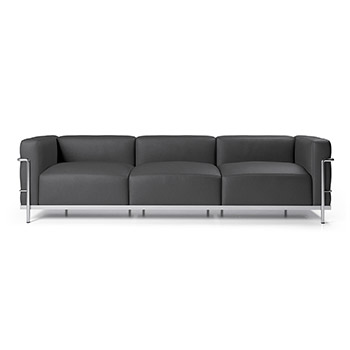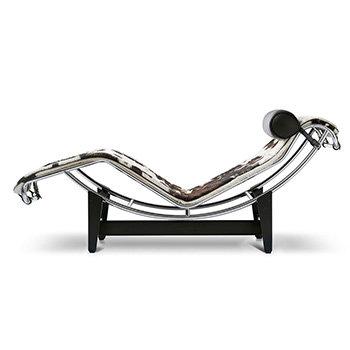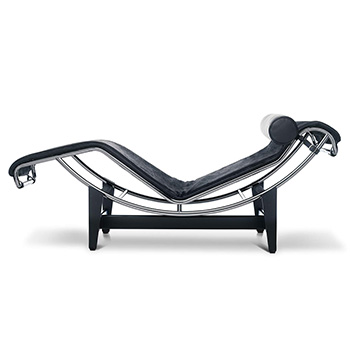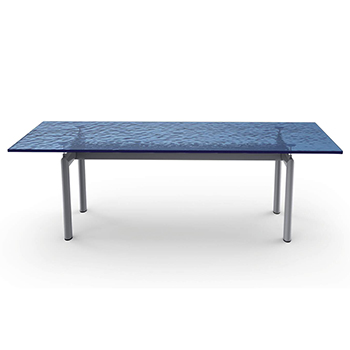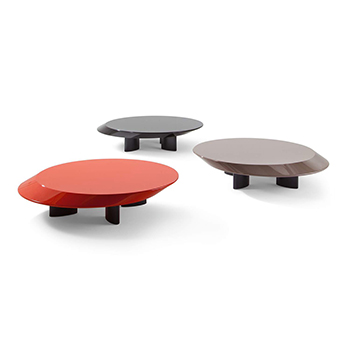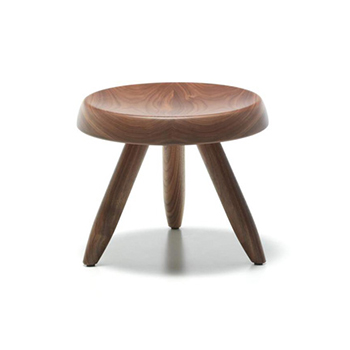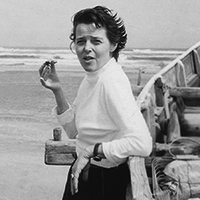
Charlotte Perriand (1903 - 1999) was born in Paris, France. Perriand attended the École de l'Union Centrale des Arts Décoratifs from 1920 to 1925. Perriand's schoolwork revealed her to be an adroit designer, and her projects were selected and exhibited at the 1925 Exposition Internationale des Arts Décoratifs et Industriels Modernes. After graduation and having been greatly encouraged by her instructors, Perriand submitted her work to be displayed at numerous exhibitions. Her most-notable entry was at the 1927 Salon d'Autumne with her design Bar sous le toit ("Bar in the Attic") installation that features a bar that employed reflective metals and geometric forms - atypical at the time. A friend encouraged Perriand to read the work of Swiss architect Le Corbusier. Perriand interviewed with Le Corbusier and was hired to work in his Paris aetelier. From 1927 to 1937 she worked in the atelier, collaborating with Le Corbusier and Pierre Jeanneret on the seminal designs in tubular steel that the trio would create in 1928 - most of which are still in production through Cassina. Shortly after leaving Le Corbusier's atelier, she began working with Jean Prouve - this collaboration was paused with her departure for Japan the day that the Germans occupied France in 1940. She would reunite with Prouve in 1951. During her time in Japan, Perriand began to experiment with materials like wood and bamboo - a departure from the pervasive use of metal in her early collaborations. Perriand's work is celebrated around the world - many of her designs both independently as well as collaboratively are still being produced today by manufacturers like Cassina and Nemo. Her work has been included in substantive retrospective exhibitions at museums and has been accessioned to permanent collections of museums around the world.
+ View Filters
-
1 Fauteuil Dossier Basculant Lounge Chair - Quickship
by Le Corbusier, Perriand, Jeanneret
for Cassina -
2 Grand Confort Lounge Chair
by Le Corbusier, Perriand, Jeanneret
for Cassina -
2 Grand Confort Lounge Chair - Quickship
by Le Corbusier, Perriand, Jeanneret
for Cassina -
2 Grand Confort Sofa - 2 Seat
by Le Corbusier, Perriand, Jeanneret
for Cassina -
2 Grand Confort Sofa - 2 Seat - Quickship
by Le Corbusier, Perriand, Jeanneret
for Cassina -
2 Grand Confort Sofa - 3 Seat
by Le Corbusier, Perriand, Jeanneret
for Cassina -
2 Ottoman
by Le Corbusier, Perriand, Jeanneret
for Cassina -
3 Grand Confort Lounge Chair
by Le Corbusier, Perriand, Jeanneret
for Cassina -
3 Grand Confort Lounge Chair - Quickship
by Le Corbusier, Perriand, Jeanneret
for Cassina -
3 Grand Confort Sofa - 3 Seat
by Le Corbusier, Perriand, Jeanneret
for Cassina -
3 Grand Confort Sofa - 3 Seat - Quickship
by Le Corbusier, Perriand, Jeanneret
for Cassina -
4 Chaise Longue
by Le Corbusier, Perriand, Jeanneret
for Cassina -
4 Chaise Longue - Quickship
by Le Corbusier, Perriand, Jeanneret
for Cassina -
6 Dining Table - Glass Top
by Le Corbusier, Perriand, Jeanneret
for Cassina -
Accordo Coffee Table
by Charlotte Perriand
for Cassina -
Applique a Volet Pivotant Double Wall Light
by Charlotte Perriand
for Nemo$730.00
-
Applique a Volet Pivotant Plie Wall Light
by Charlotte Perriand
for Nemo$730.00
-
Applique a Volet Pivotant Wall Light
by Charlotte Perriand
for Nemo$655.00
-
Applique Cylindrique Wall Light
by Charlotte Perriand
for Nemo$677.00
-
Berger Stool
by Charlotte Perriand
for Cassina

